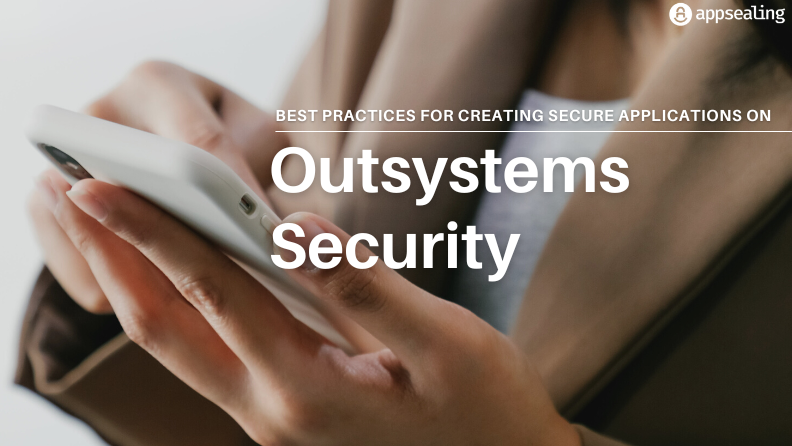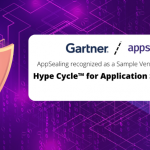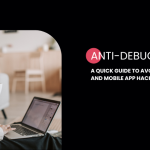OutSystems is a low-code platform that provides tools for companies to develop and deploy applications. OutSystems is designed to accelerate application development without compromising security. OutSystems guarantee a secure runtime environment for applications while also providing the tools necessary for secure development. Apps built using OutSystems are protected from OWASP vulnerabilities by default and enterprises can launch secure applications faster. Let’s explore OutSystems Security in detail in this article.
Outsystems Security
What OutSystems provide by Default?
OutSystems provide applications with certain security capabilities by default. Here is a rundown on the security benefits of building applications with OutSystems:
Ready to protect your app?
Start 30-days FREE TRIAL. No credit card required. Deliver Secure Mobile Apps Faster in minutes with the leader in application security.

1. Secure application code
OutSystems equips the application code with an extra layer of security. It leverages secure code patterns to safeguard applications from vulnerabilities. Applications built with OutSystems come with in-built security features like protection against injection attacks and automatic Cross-Site Request Forgery protection. OutSystems also helps escape untrusted HTTP request data which prevents reflected and stored XSS vulnerabilities. It ensures the code complies with Android and iOS specifications.
2. Secure session data
OutSystems guard applications against session fixation attacks. OutSystems prevents fixation attacks by transparently changing session identifiers on each login. OutSystems is characterized by a built-in anti-tampering JSON deserialization mechanism. It draws comparisons between incoming JSON data with predefined application models to perform type verification during deserialization. OutSystems also runs a salted hashing algorithm over the serialized session data.
3. Secure authentication mechanism
Applications built with OutSystems come equipped with an authentication mechanism that is configurable according to the environment. It encrypts and protects user authentication information in two authentication cookies. Single sign-on capabilities for modules with cookies are another important feature found in applications built with OutSystems. End users gain access to applications without authentication once they are authenticated in any one application.
4. Role-based access control for applications
OutSystems places access restrictions on application pages. Developers rely on visual building blocks to define application-level permissions. Role-based access control only permits authorized users to perform actions.
5. Role-based access control for IT users
IT users are assigned different responsibilities depending on their roles. Each role is permitted to perform only certain functions. The developer role may not be allowed to perform functions that the operations role is allowed to perform.
6. Protection from brute force attacks
Application end users and IT users are protected against brute force attacks with built-in protection mechanisms. This mechanism can be implemented to suit your specific business needs. For example, you can set the maximum limit for failed login attempts before the application blocks users.
7. Enforced HTTPS
Mobile applications built with OutSystems only transmit information to server endpoints over HTTPS. The communication is always encrypted. Communication without HTTPS security leads to errors on the server side.
8. Application auditing
OutSystems enables you to collect data on running applications. You can leverage the monitoring tools to view screen requests, application logs, errors, business processes, integration calls, and security audits.
9. System activity auditing
OutSystems facilitates task monitoring with system activity auditing. Events that you can track include storing a new version of an application or component, deploying a new version, modifying user configurations, deleting an application, or logging into the system. OutSystems gives insights into events such as modifications to applications.
10. Vulnerability Management
OutSystems adopts a continuous delivery approach to monitor vulnerabilities in the code and release incremental value. You should update the OutSystems infrastructure to leverage the latest features and fixes.
Outsystems Application Security
OutSystems facilitates building secure applications in the ways listed below:
- With each upgrade, all applications get automatically embedded with the latest security features.
- Encryption of data at rest and integration with identity management systems can be simplified with pre-built components.
- Only the right team members will have access and permission to change and deploy applications with role-based access control.
- Static code analysis tools are used to assess vulnerabilities in generated code.
Outsystems Infrastructure Security
OutSystems Cloud gives access to the below-mentioned security features.
- Customers will have a dedicated virtual private cloud (VPC) infrastructure.
- OutSystems ensure secure access to on-premises systems with a VPN.
- It also facilitates easy uploading of custom SSL/TLS certificates
- Customers will receive notifications for security issues
- Application servers and operating systems are updated with the latest fixes and patches
- Your customer applications will benefit from vulnerability scanning and penetration testing
Outsystems Security Operations
A dedicated Computer Security Incident Response Team (CSIRT) is one of the important benefits of using OutSystems. The CSIRT addresses security threats and keeps an eye out for newly emerging vulnerabilities.
Mentioned below are the operating procedures of OutSystems:
- Well-established hiring procedures are implemented for employees and contractors
- Security is prioritized throughout the entire software lifecycle right from planning to deployment.
- Patching management, change management, event management, access management, and incident handling.
- Organizations can ensure the protection of critical business functions during unforeseen circumstances with a business continuity strategy.
Final Thoughts
OutSystems is a fantastic platform to develop and deploy secure applications built on cutting-edge technology. OutSystems allows you to design and manage business processes and integrate them into your applications. OutSystems ensure solutions are secure, resilient, cloud-ready, and built to scale. It helps accelerate productivity, collaboration, experimentation, and execution at scale with a high-performance, low-code approach. OutSystems enables businesses to leverage power, speed, and security to launch innovative applications. It provides a default level of protection against web and mobile app vulnerabilities. Some of its default protections include secure application code, session data, and authentication mechanism; role-based access control for applications and IT users; application and system activity auditing; and vulnerability management among others. It is a rapidly growing development and deployment tool that companies must leverage to their advantage.
Appsealing is a pioneering app security solution provider that protects Android, iOS, and Hybrid apps with zero coding. Appsealing has extensively focused on developing app shielding solutions in its endeavor to tighten security of business applications. We assist companies in their pursuit to elevate security with a single, holistic platform. We constantly innovate and finetune our operations to keep up with the current market conditions and evolving threat landscape, making use of emerging platforms like OutSystems to provide cutting-edge security solutions to our clients.
Get in touch with our team to develop and launch a secure, robust application that gives you a competitive edge.
FAQs on Outsystems Security
1. What identity providers can be used in OutSystems apps?
OutSystems is characterized by a built-in authentication provider. Though it integrates with Active Directory and LDAP, you can choose any identity provider.
2. Is single sign-on available?
Single sign-on is a default feature in all apps built with OutSystems. Users can navigate through apps after authenticating once.
3. Can you secure OutSystems apps and services with HTTPS?
OutSystems ensures secure communication between customers and servers by exposing screens and services with an HTTPS end-point.
4. How to create secure REST APIs with OutSystems?
OutSystems enables secure REST APIs by toggling a single property. Users can choose no authentication or basic HTTP authentication. OutSystems also permits the implementation of a custom authentication mechanism.
5. How can you build secure mobile apps?
Development teams can leverage recommendations and plugins provided by OutSystems to ensure their applications are secure.
Ready to protect your app?
Start 30-days FREE TRIAL. No credit card required. Deliver Secure Mobile Apps Faster in minutes with the leader in application security.







